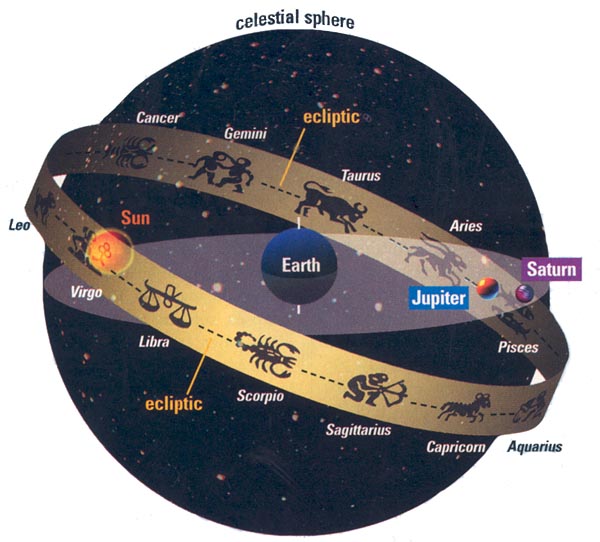What the Magi Saw
Sidebar to: The Magi and the Star

The Triple Conjunction of Jupiter and Saturn
Ancient astronomers believed that the Earth was the center of the universe. They thought that the sun, moon and the five visible planets—Mercury, Venus, Mars, Jupiter and Saturn—circled around the Earth at different distances and speeds. Farthest away was the great celestial sphere in which the stars, and the constellations they formed, were embedded. The constellations on the celestial sphere thus appeared as a backdrop to the sun, moon and planets as they moved across the heavens.
The group of 12 constellations in front of which the sun, moon and planets appear to move are probably the best-known features of the night sky: They are the constellations of the zodiac—Aquarius, Pisces, Aries, Taurus and so on. The band along which these constellations appear is called the ecliptic. In the drawing below, for example, the sun is “in” (really, in front of) Virgo. Of course, the ancients could never really see the sun in any particular constellation since the stars aren’t visible in the daytime; but since they were familiar with the order of the zodiac and the sun’s rising and setting throughout the year, they could easily calculate which constellation the sun was “in,” even if they couldn’t see it. It is much easier to see a planet in a constellation at night, as shown in the photo taken on December 16, 2000, which shows a conjunction of Jupiter and Saturn in Taurus (see photo of conjunction of Jupiter and Saturn).
Already a library member? Log in here.
Institution user? Log in with your IP address.

